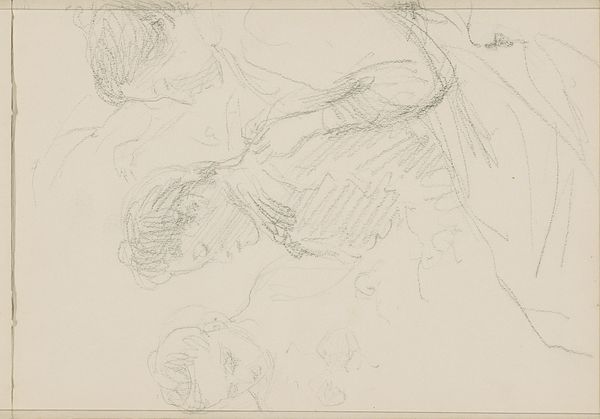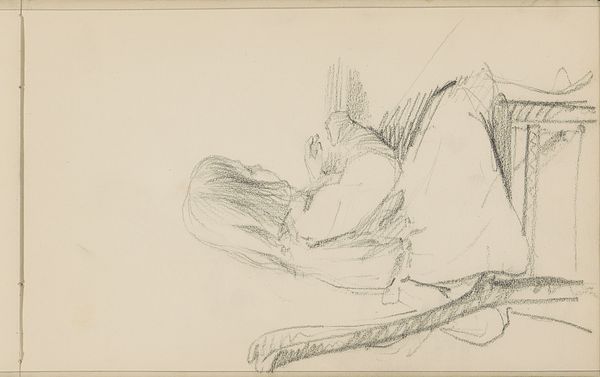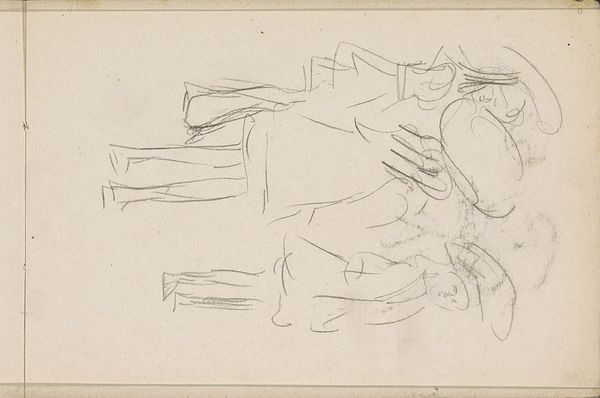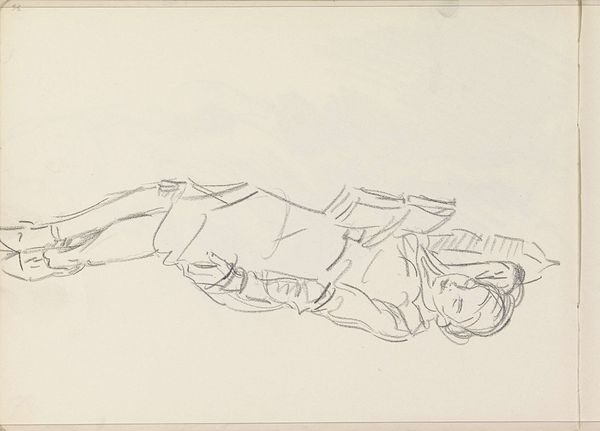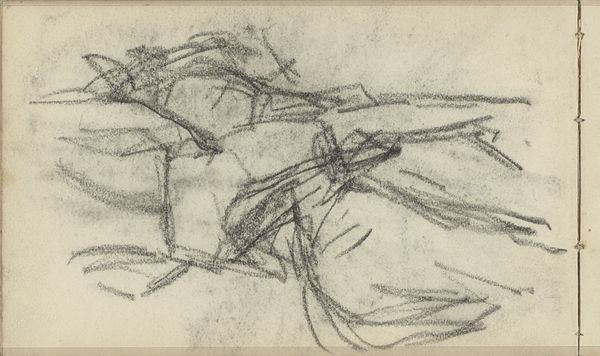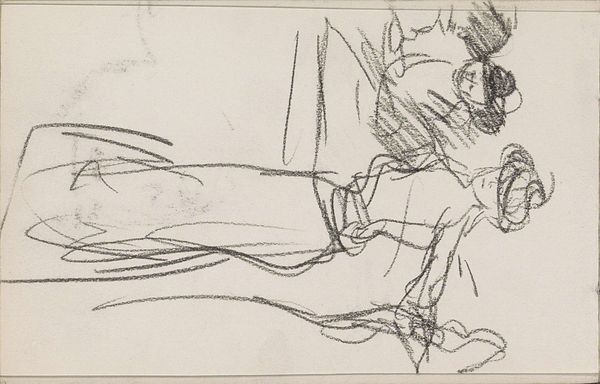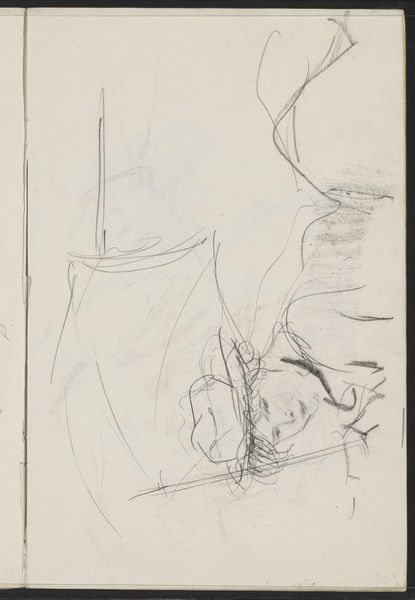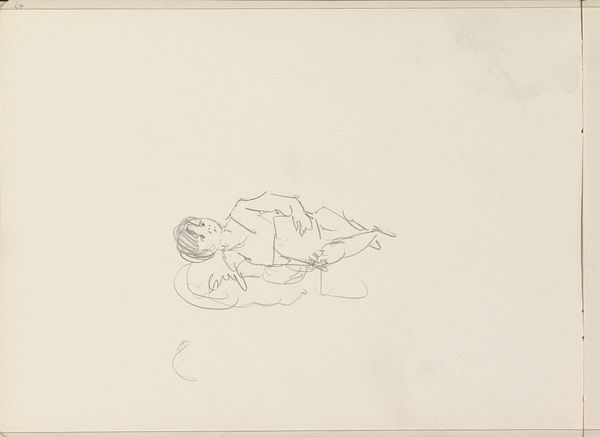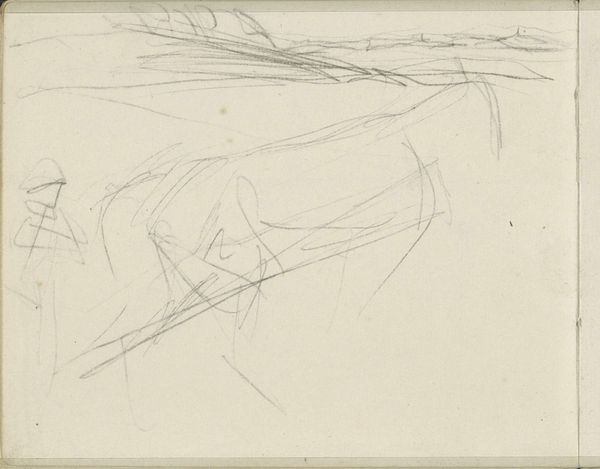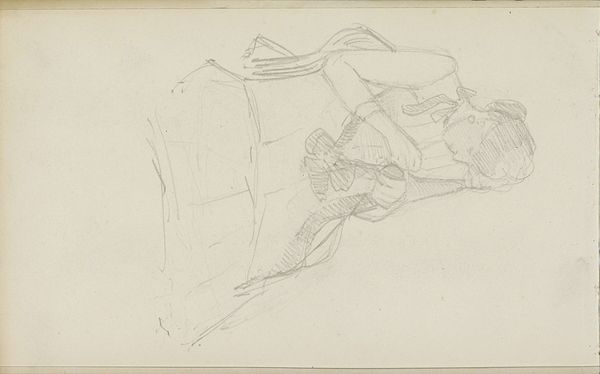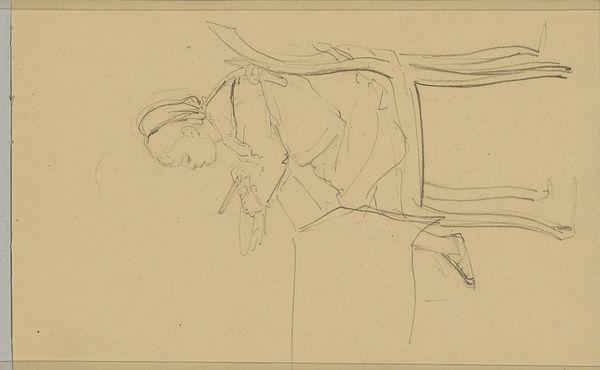
drawing, pencil
#
portrait
#
drawing
#
pencil sketch
#
figuration
#
pencil
Copyright: Rijks Museum: Open Domain
Editor: Here we have “Vrouw, schetsend achter een tekenblok,” or "Woman, Sketching Behind a Drawing Pad," created sometime between 1865 and 1913 by Bramine Hubrecht. It’s a pencil drawing currently held at the Rijksmuseum. It feels unfinished, a fleeting impression caught in the moment. What do you see in it? Curator: I see echoes of artistic forebears and nascent symbolisms wrestling for dominance. The red pencil, a somewhat unusual choice for preparatory sketches at the time, already hints at a break from tradition, an emerging voice using colour not just for accuracy but expression. Think of red's potent history - blood, passion, revolution... Editor: Revolution? In a sketch of a woman drawing? Curator: Perhaps not overtly. But consider the gaze. It's averted, internal. Women artists of this era were beginning to explore not just outward representations but inner lives, subjective experiences. What’s the emotional weight carried by artists who look to look? Editor: That’s a good point. The woman’s hidden face almost suggests she’s guarding something. Her thoughts, perhaps? Curator: Exactly! The act of drawing becomes a symbolic shield, a way to process and mediate the world. And the sketch itself, incomplete as it may seem, is a record of that internal journey. The sketch mirrors the self looking to project. It mirrors itself, doesn't it? Editor: It certainly gives me a lot to think about. I initially saw it as a simple sketch, but now I see it as a symbolic statement. Thanks! Curator: A statement about silence that reveals memory: precisely. It was a pleasure.
Comments
No comments
Be the first to comment and join the conversation on the ultimate creative platform.
